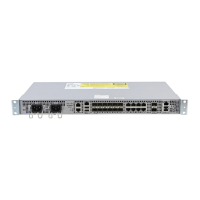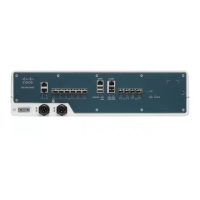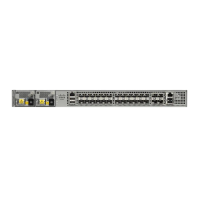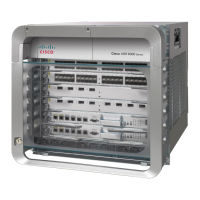Configuring the Tailend Routers
The tailend routers remove the MPLS labels from the IP multicast packets and send the packets to the MFIB
for regular multicast forwarding processing. You must issue the ip mroute command to configure a static
route back to the headend router, thus enabling RPF checks.
The following task explains how to configure PIM on the egress interface of the PE router. PIM is needed
when the egress PE router is connected to a CE router, which is connected to a LAN where one or more
multicast receivers are connected.
If the egress PE router is directly connected to a decoder device/system (e.g., DCM), you must configure
Internet Group Management Protocol (IGMP) on the egress interface of the PE router. For more information
on configuring IGMP, see Customizing IGMP .
SUMMARY STEPS
1.
enable
2.
configure terminal
3.
ip multicast-routing [vrfvrf-name] [distributed]
4.
ip multicast mpls traffic-eng [rangeaccess-list-number | access-list-name]
5.
interface type slot / port
6.
ip pim {dense-mode [proxy-register {listaccess-list | route-mapmap-name}] | passive | sparse-mode |
sparse-dense-mode}
7.
exit
8.
ip mroute [vrfvrf-name] source-addressmask{fallback-lookup {global | vrfvrf-name} | rpf-address |
interface-typeinterface-number} [distance]
9.
end
DETAILED STEPS
PurposeCommand or Action
Enables privileged EXEC mode.enable
Step 1
Example:
Router> enable
•
Enter your password if prompted.
Enters global configuration mode.configure terminal
Example:
Router# configure terminal
Step 2
Enables IP multicast routing globally.
ip multicast-routing [vrfvrf-name] [distributed]
Example:
Router(config)# ip multicast-routing
Step 3
MPLS Traffic Engineering Path Calculation and Setup Configuration Guide, Cisco IOS XE Release 3S (Cisco ASR
920 Series)
25
MPLS Point-to-Multipoint Traffic Engineering
Configuring the Tailend Routers

